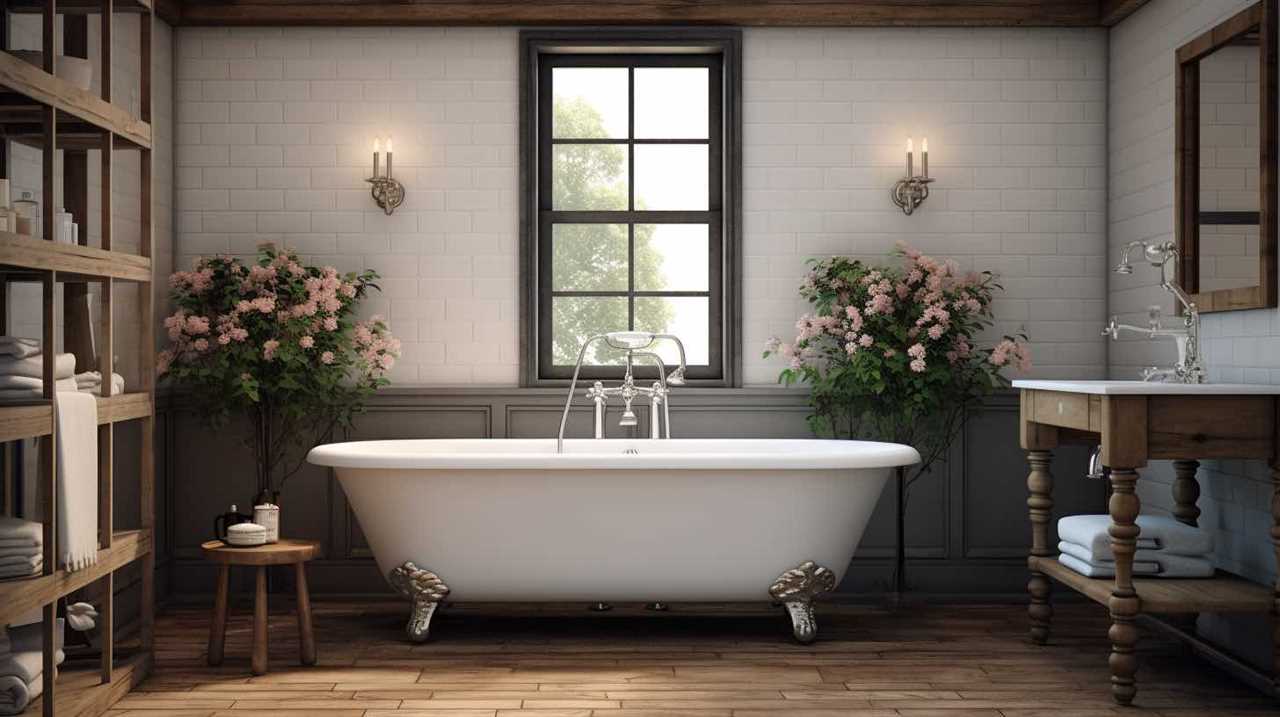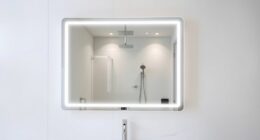We have all encountered the annoyance of a wet bathroom. It can become a hub for mold and mildew, posing health risks for our home.
But fear not! In this article, we’ll delve into the common causes of bathroom dampness, the potential risks it poses, and provide practical solutions to keep your bathroom dry and comfortable.
With our expert tips and techniques, you’ll be able to prevent mold and mildew growth, ensuring a healthy and hygienic bathroom environment.
Key Takeaways
- Excessive moisture, inadequate ventilation, high humidity, poor insulation, and condensation on cold surfaces are common causes of a damp bathroom.
- A damp bathroom can lead to the growth of mold and mildew, release of spores causing respiratory issues, allergies and asthma attacks, weakening of structural integrity, and costly repairs and renovations.
- Practical solutions for drying a bathroom include using a dehumidifier, opening windows or using exhaust fans for natural ventilation, improving air quality, reducing humidity levels, and opting for cost-effective and environmentally friendly solutions.
- To prevent mold and mildew growth, it is important to maintain proper ventilation, use exhaust fans or open windows during and after showering, regularly clean and dry bathroom surfaces, fix leaks and plumbing issues promptly, and reduce the risk of mold and mildew growth.
Common Causes of Dampness
One of the most common causes of dampness in bathrooms is the presence of excessive moisture. This can be attributed to various factors, such as inadequate ventilation, high levels of humidity, and poor insulation.
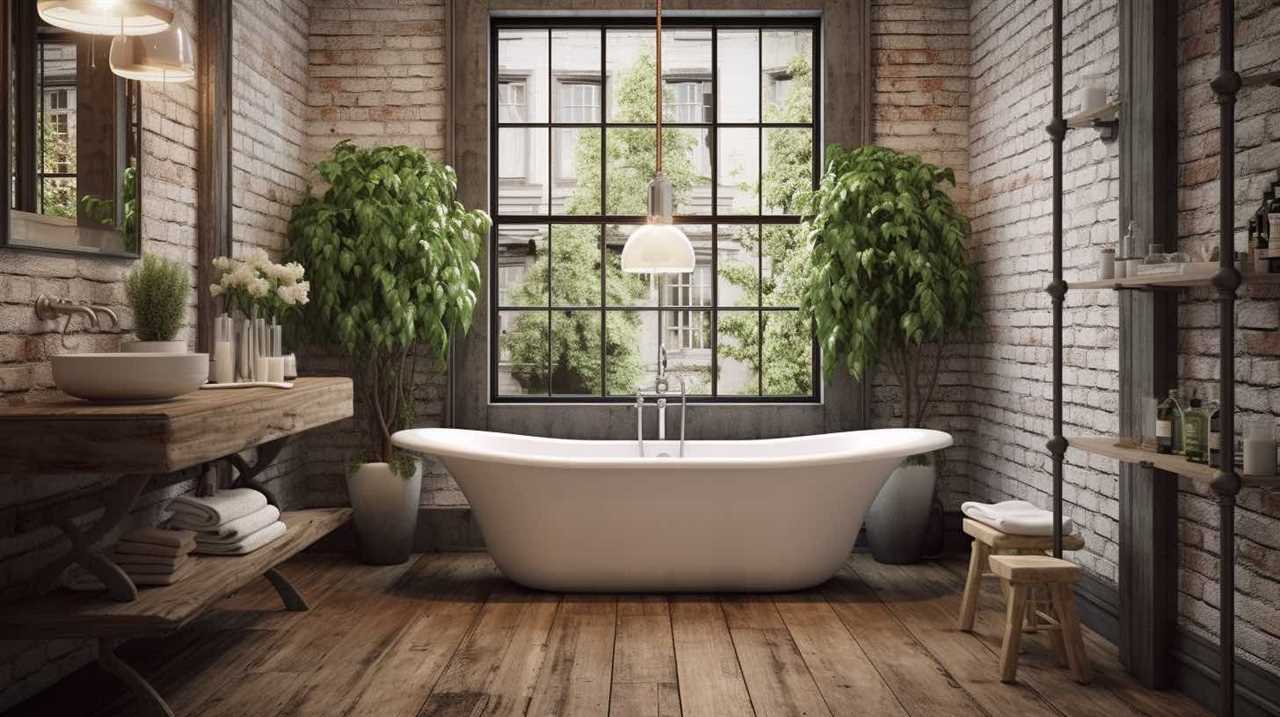
When warm air comes into contact with cold surfaces, it cools down and condenses, leading to the formation of water droplets. This phenomenon, known as condensation, can occur on mirrors, windows, walls, and other bathroom surfaces.
Additionally, the effects of humidity play a crucial role in promoting dampness. High humidity levels result in increased moisture content in the air, which can then penetrate porous materials like paint, wallpaper, and grout, causing them to become damp and potentially lead to the growth of mold and mildew.
Therefore, it’s important to address these causes of condensation and humidity to prevent and mitigate the issue of dampness in bathrooms.
Potential Risks of a Damp Bathroom
We need to address the potential risks of a damp bathroom.
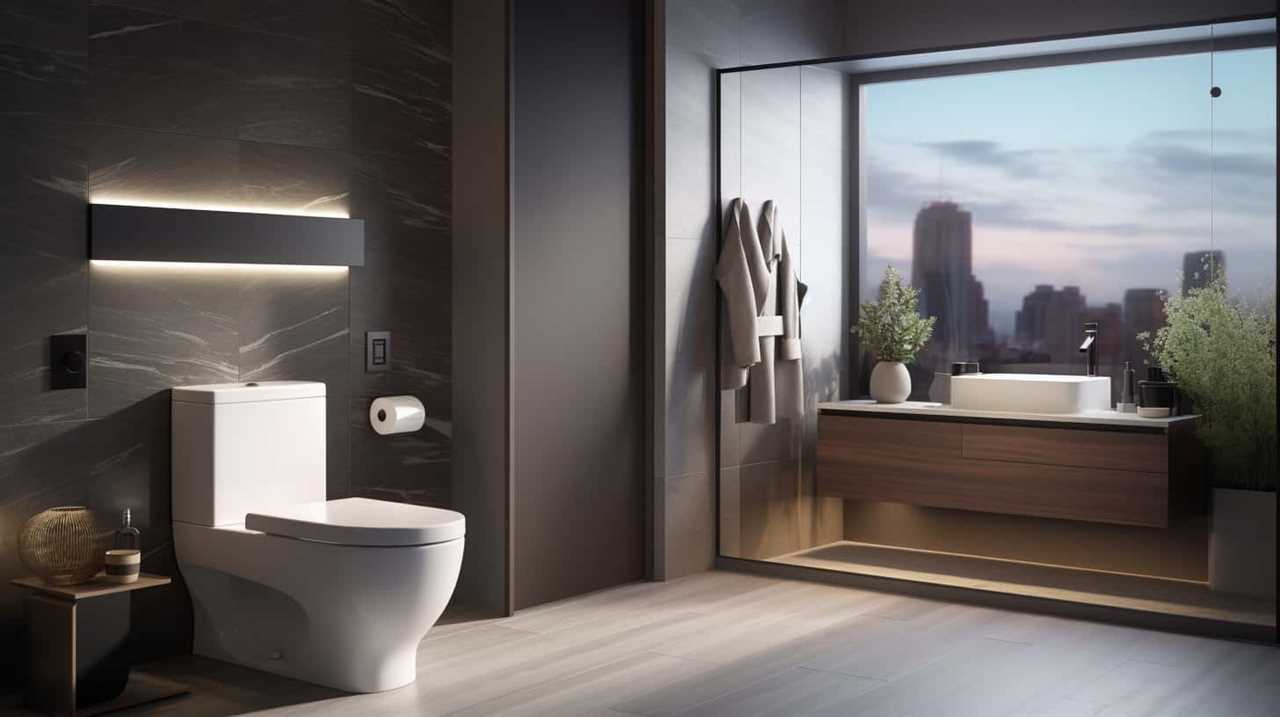
A damp bathroom can pose significant health hazards and structural damage if not properly addressed.
Firstly, the presence of moisture in the bathroom provides an ideal environment for the growth of mold and mildew. These microorganisms release spores that can lead to respiratory issues, allergies, and asthma attacks, especially for individuals who are already susceptible.
Additionally, the constant exposure to moisture can weaken the structural integrity of the bathroom. Over time, dampness can cause paint to peel, tiles to crack, and even weaken the walls and floor. This can result in costly repairs and renovations.
It’s crucial to tackle the issue of dampness in the bathroom promptly to prevent these potential risks and maintain a safe and structurally sound environment.
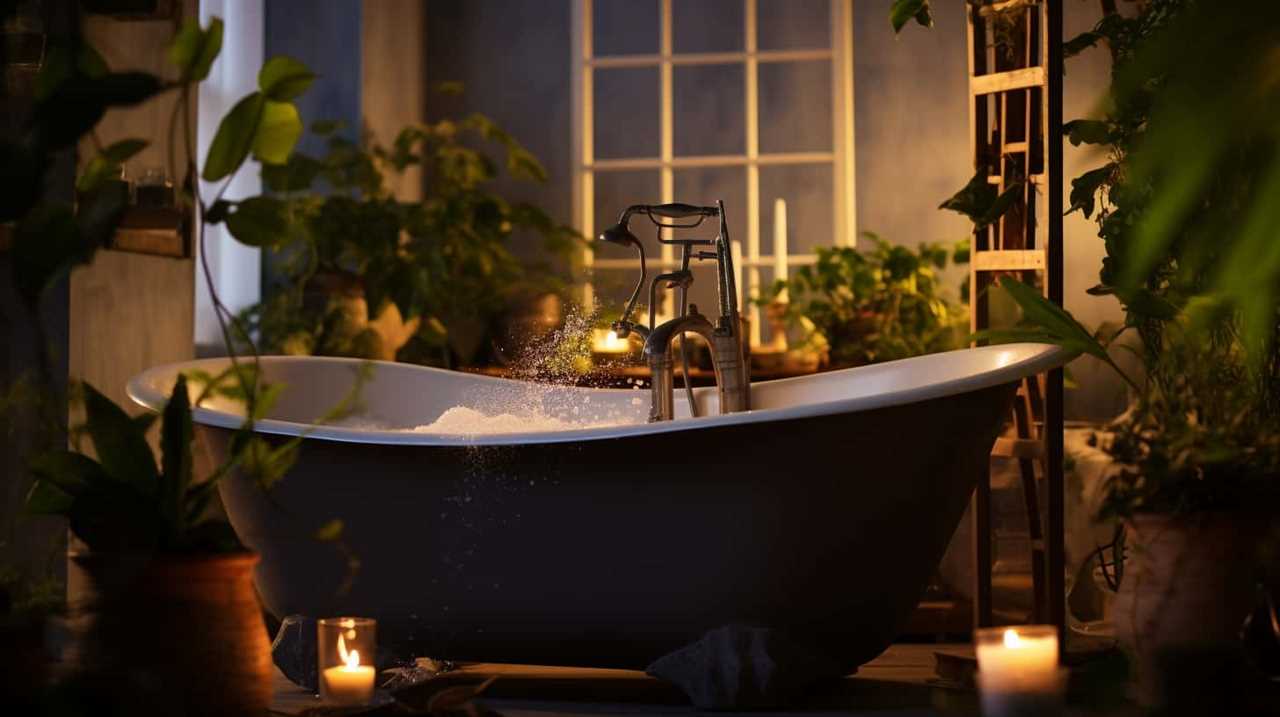
Practical Solutions for Drying Your Bathroom
To effectively address the issue of a damp bathroom, let’s explore practical solutions for drying it out.
One effective solution is to use a dehumidifier. Dehumidifiers are designed to remove excess moisture from the air, helping to prevent mold and mildew growth. They work by pulling in the humid air, cooling it to condense the moisture, and then releasing the dry air back into the room. The benefits of using a dehumidifier include improved air quality, reduced odors, and decreased humidity levels.
Another option for drying out your bathroom is natural ventilation. This can be achieved by opening windows or using exhaust fans to allow fresh air to circulate and remove moisture. Natural ventilation is a cost-effective and environmentally friendly way to reduce humidity levels in your bathroom.
Tips for Preventing Mold and Mildew Growth
To effectively prevent mold and mildew growth, it’s important to maintain proper ventilation and keep moisture levels in check.
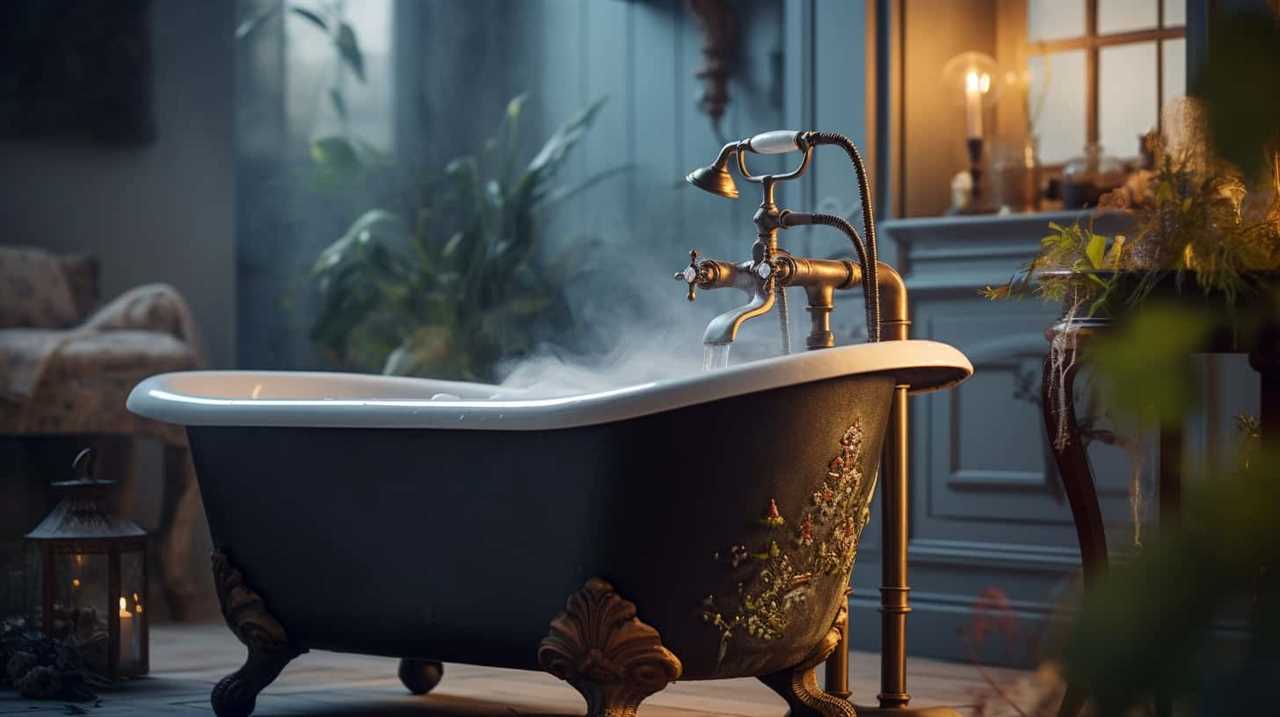
One way to prevent condensation and reduce humidity levels is to use exhaust fans or open windows during and after showering to allow moisture to escape. Additionally, using a dehumidifier can help remove excess moisture from the air.
Regularly cleaning and drying bathroom surfaces, such as walls, floors, and shower curtains, can also prevent the growth of mold and mildew. It’s essential to fix any leaks or plumbing issues promptly to prevent water accumulation.
By following these tips, you can significantly reduce the risk of mold and mildew growth in your bathroom, creating a healthier and more pleasant environment.
Now, let’s explore how to maintain a dry and comfortable bathroom.

Maintaining a Dry and Comfortable Bathroom
To maintain a dry and comfortable bathroom, proper ventilation and moisture control are essential.
Bathroom ventilation plays a crucial role in preventing dampness and condensation, which can lead to mold and mildew growth. Installing an exhaust fan or improving the existing ventilation system can help remove excess moisture from the air and reduce humidity levels. It’s important to choose a fan with sufficient airflow capacity for the size of your bathroom. Regularly cleaning and maintaining the fan will ensure its effectiveness in removing moisture.
Additionally, moisture control can be achieved by using waterproof materials for walls, floors, and ceilings, as well as sealing any gaps or cracks.
Proper bathroom ventilation, combined with effective moisture control measures, will help create a dry and comfortable environment, promoting a healthier and more enjoyable bathroom experience.
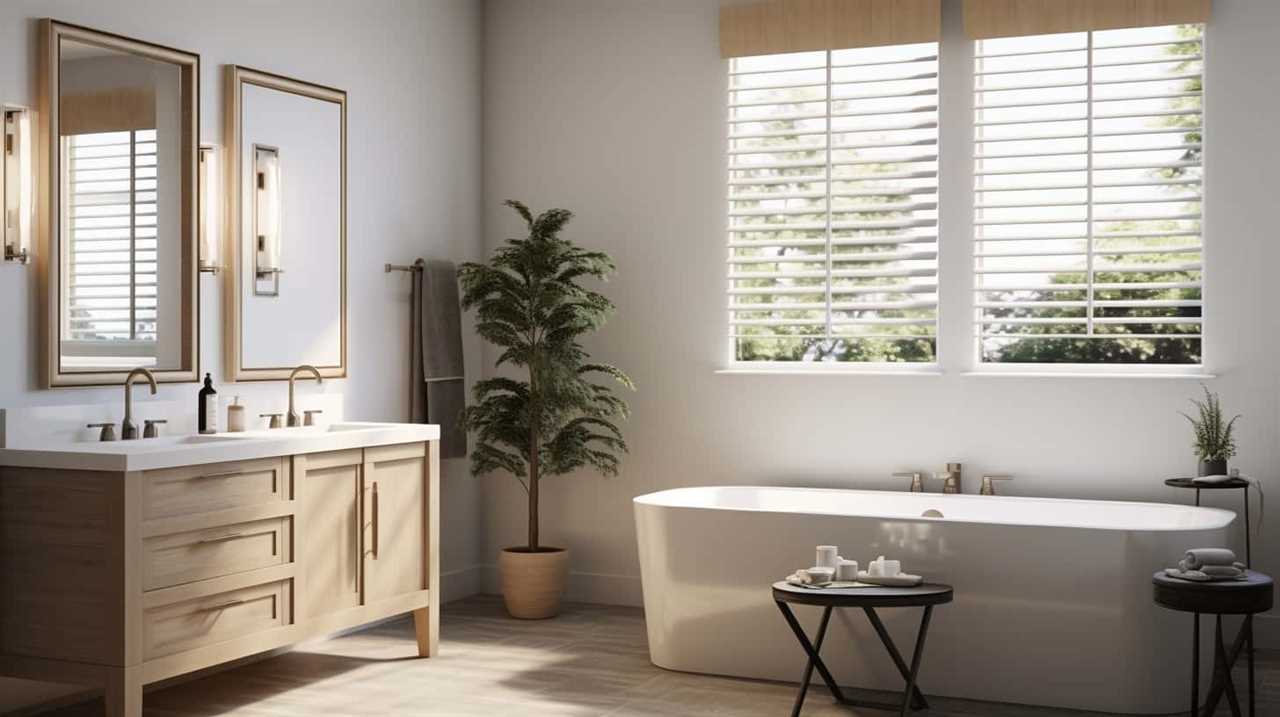
Frequently Asked Questions
How Can I Determine if My Bathroom Is Damp?
To determine if our bathroom is damp, we can use a moisture meter or check for signs such as condensation, musty odors, or peeling paint. Preventing moisture involves proper ventilation, sealing gaps, and using moisture-resistant materials.
Are There Any Health Risks Associated With a Damp Bathroom?
Health risks associated with a damp bathroom include mold growth, which can trigger allergies and respiratory issues. Prevention measures like proper ventilation and regular cleaning can mitigate these risks and ensure a healthier environment.
What Should I Do if I Notice Mold or Mildew in My Bathroom?
If we notice mold or mildew in our bathroom, we should take immediate action. Preventing mold growth is crucial, so we must ensure proper ventilation and use cleaning techniques specifically designed for mold and mildew.
Can a Damp Bathroom Affect the Structural Integrity of My Home?
A damp bathroom can potentially cause structural damage to our home. It’s crucial to prioritize moisture prevention measures to safeguard the integrity of our house.

Are There Any Long-Term Consequences of Not Addressing Dampness in the Bathroom?
There can be long-term effects of not addressing bathroom dampness. It is important to take preventive measures to avoid potential damage to the structural integrity of our home.
Conclusion
In conclusion, a damp bathroom can be a breeding ground for mold and mildew, posing potential health risks and affecting the overall comfort of the space.
One interesting statistic to consider is that 50% of homes have some form of dampness issue in their bathrooms, according to a recent study.
By implementing practical solutions such as proper ventilation and regular maintenance, you can ensure a dry and comfortable bathroom environment for you and your family.


